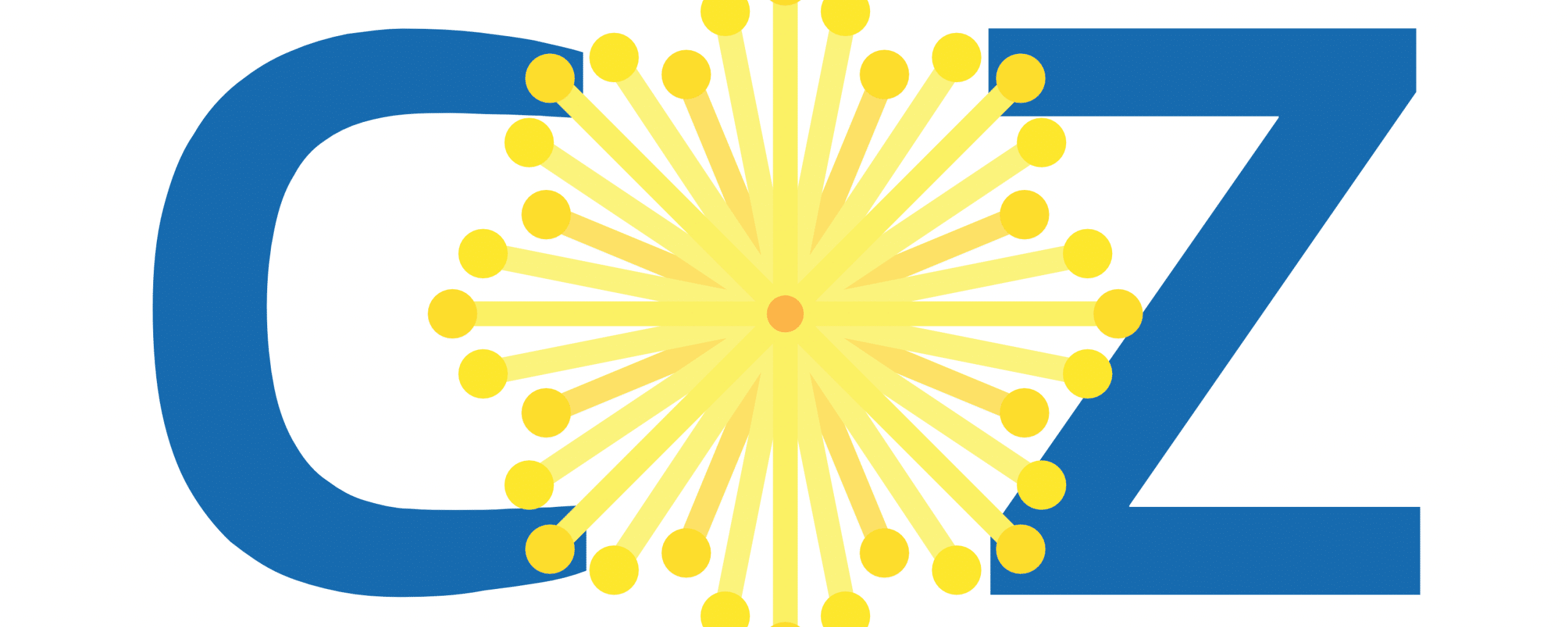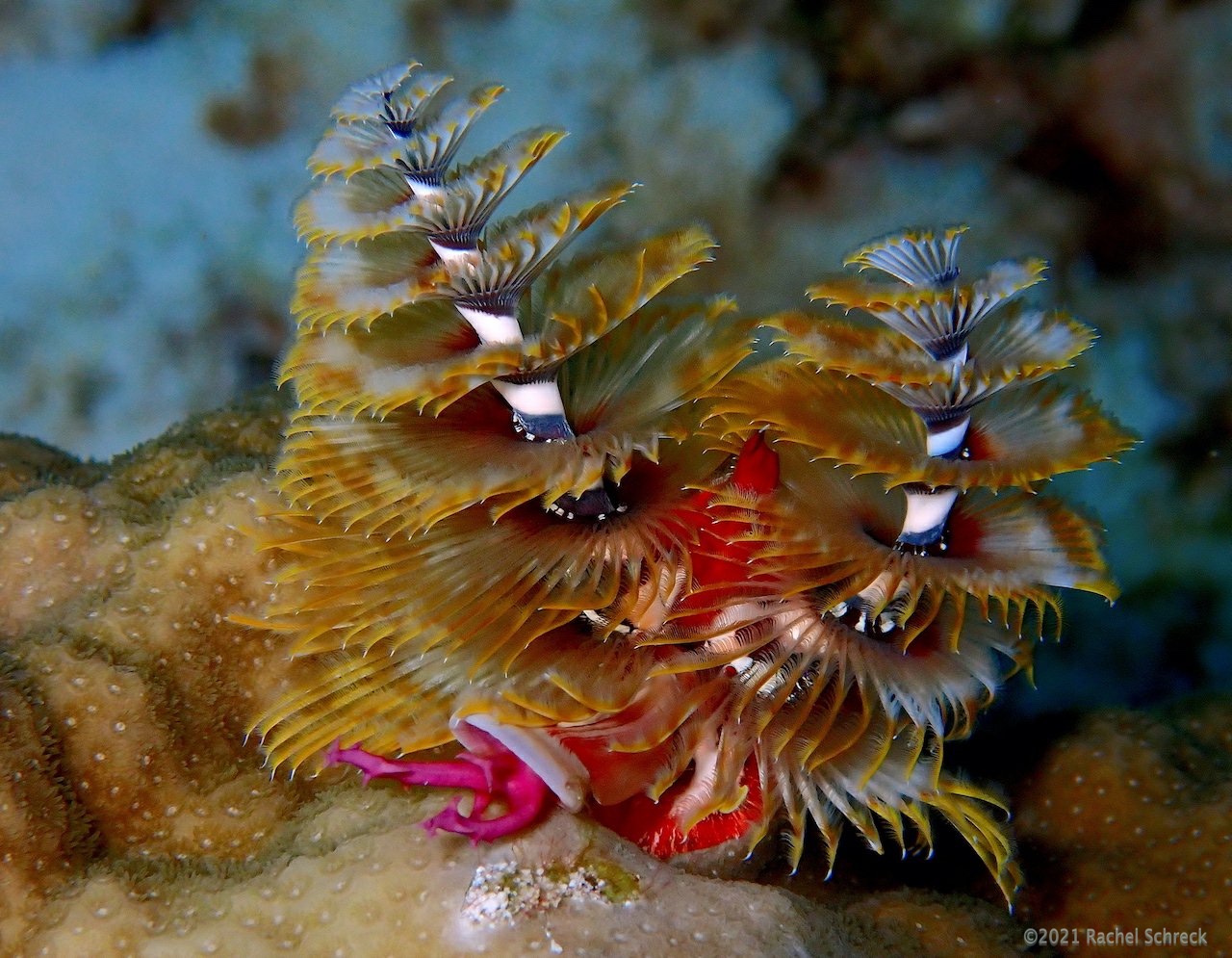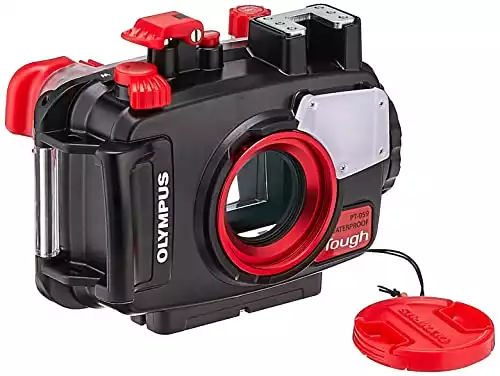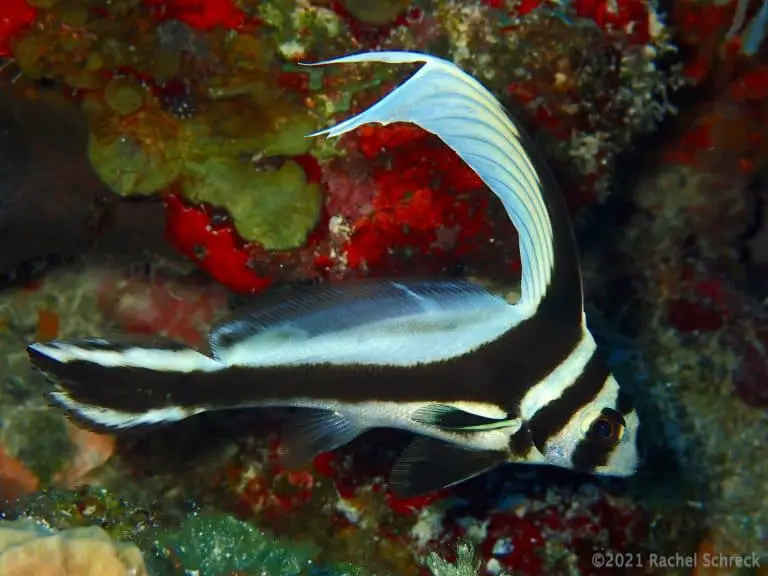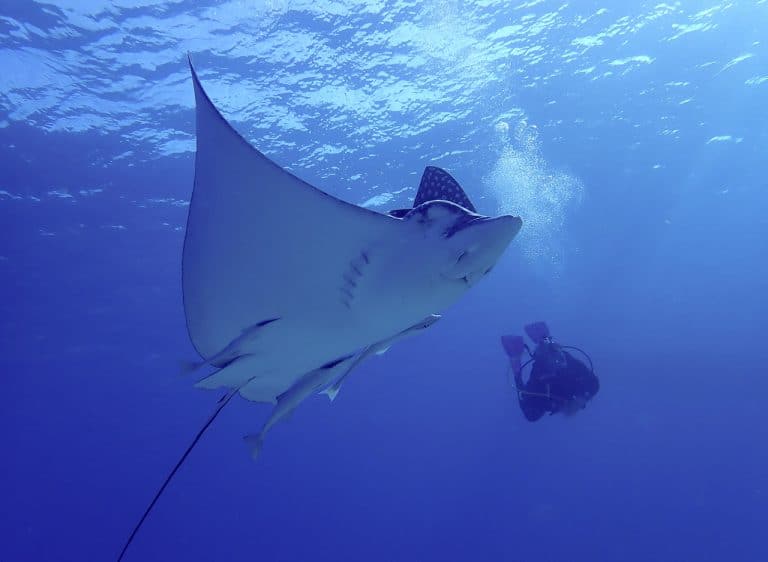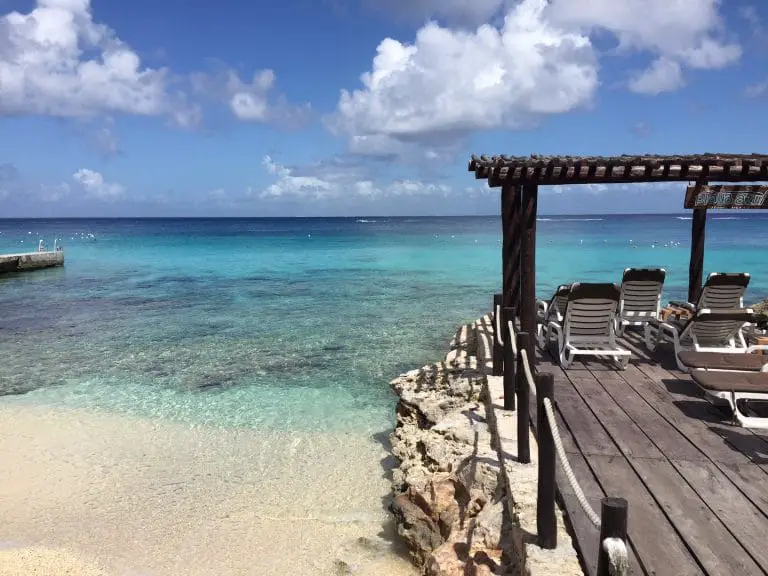Cozumel Marine Life: Tube Worms and Bristle Worms
Marine worms may not be the most glamorous macro marine species in Cozumel, but like most underwater critters, the more you observe them, the more neat detail, color, and behavior you’ll find.
Divers in Cozumel often encounter marine worms, most of which are in the polychaete worm species class. Individual and social feather duster worms, dual-chambered tube worms, and segmented bristle worms are the most plentiful. These common worms are found on hard and soft corals at various depths.
If you read this related post on some beginner tips for underwater photography, these polychaete marine worms are great examples of easier subjects you might want to practice with as you learn.
They’re plentiful and relatively easy to shoot – provided you avoid the common beginner scuba issues that scare them into retreat.
Cozumel’s Christmas Tree Marine Worm
Christmas tree worms (spirobranchus giganteus) are among the first coral reef inhabitants that many new divers encounter – and the encounters are memorable.
When approached, Christmas tree worms appear like inanimate growths or other-worldly flowers of some kind. But according to NatGeo these and related types of fanning marine worms actually have numerous light-sensitive ‘eyes’ in their tentacles, so if approached too quickly or awkwardly, they react in an instant.
The two brightly-colored conical spirals of feather-like plumes retract down and into their protective tube-like foundation if you get too close. There one moment and then gone the next – in a split second.

Burrowed calcareous tubeworms, like the well-known Christmas tree worm, also burrow into other marine substrates, including wrecks and artificial reef structures.
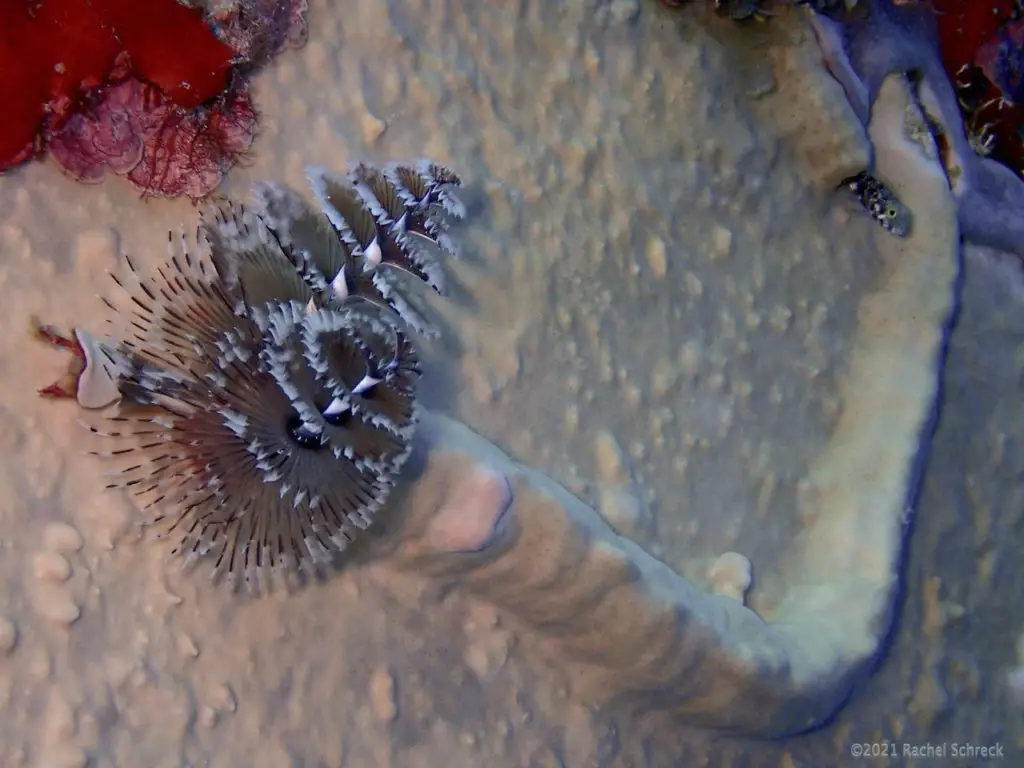
As you get more dives under your belt and improve your buoyancy and control, you can calmly approach this pretty type of polychaete marine worm, and get a bit closer.
Then you’ll start to notice more detailed anatomy, including their intricately colored and feathery arms, or radioles, that open up in order to filter and trap nutrients in the current. (This is similar to the behavior of the giant basket stars from this earlier marine life post here, though on a much smaller scale).
At the base of each worm, you can sometimes spot what looks like the head of the worm, with two protrusions extended in front, almost like antennae or horns (like these purple ones, below).
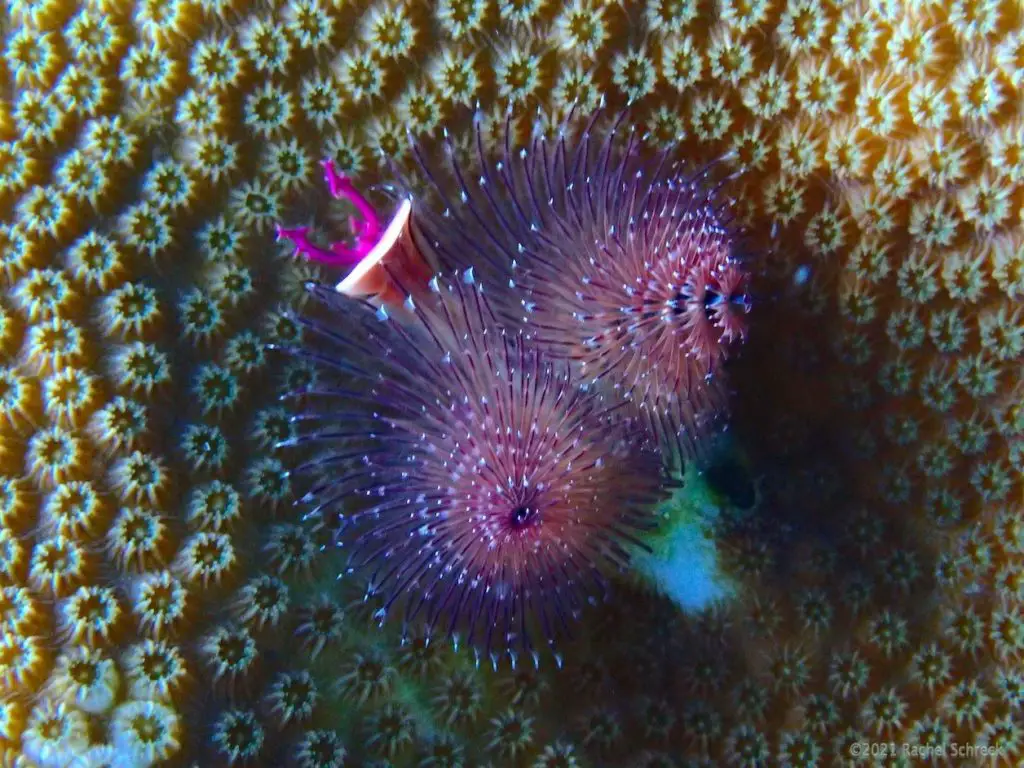
It wasn’t until I started taking loads of underwater photos when diving that I could approach deftly enough to get close and capture the details.
It’s also possible to spot and identify the operculum, or tube opening, of a retracted tube worm. If you spot one you can wait patiently for it to reemerge, as in this series, below.
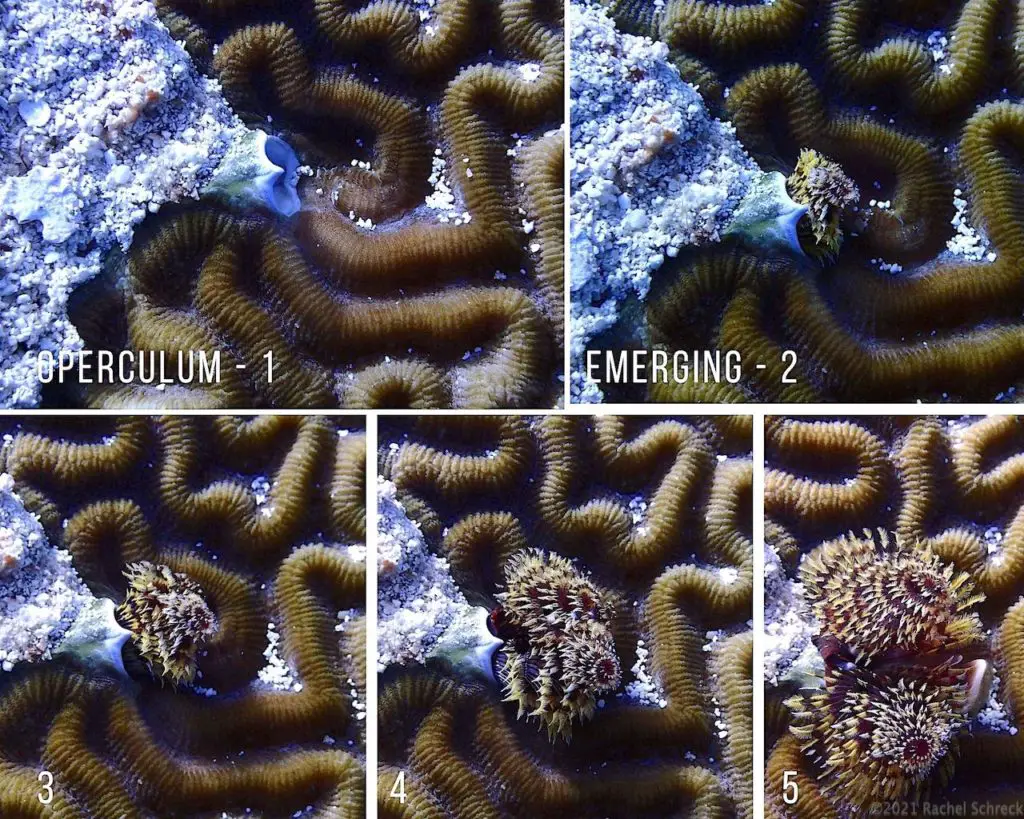
Related Marine Tube Worms in the Caribbean
Horseshoe Worms
Another very similar marine worm in the polychaete species that we see frequently while diving in Cozumel is the horseshoe worm.
Horseshoe worms also emerge from tubes burrowed into a given substrate and display a dual-sided plume of feathery radiole.
In the case of the star horseshoe marine worm (pomatostegus stellatus) however, the two sides look more like a connected circle that’s been pinched in the center, rather than two, distinct little trees.

I love practicing underwater macro photography in Cozumel on these horseshoe worms because they’re so delicate and pretty, with nicely challenging detailed anatomy.
They’re also very often found on a beautiful coral background, making for a much better overall image.
Fan Worms and Featherduster Worms in Cozumel
Other common marine worms seen in Cozumel’s coral reefs are the fan worms and feather duster worms (which seem to be one in the same thing, at the basic level).
These worms also emerge from foundational tubes to reveal one bloom of long, feathery radioles that extend out in a circle, like a flower.
According to our favorite Caribbean Marine Creature ID book* for invertebrates, the radioles are used both as gills and as nets with which to trap plankton, and then move this food to its central mouth at the organism’s center.
Learn those critters!
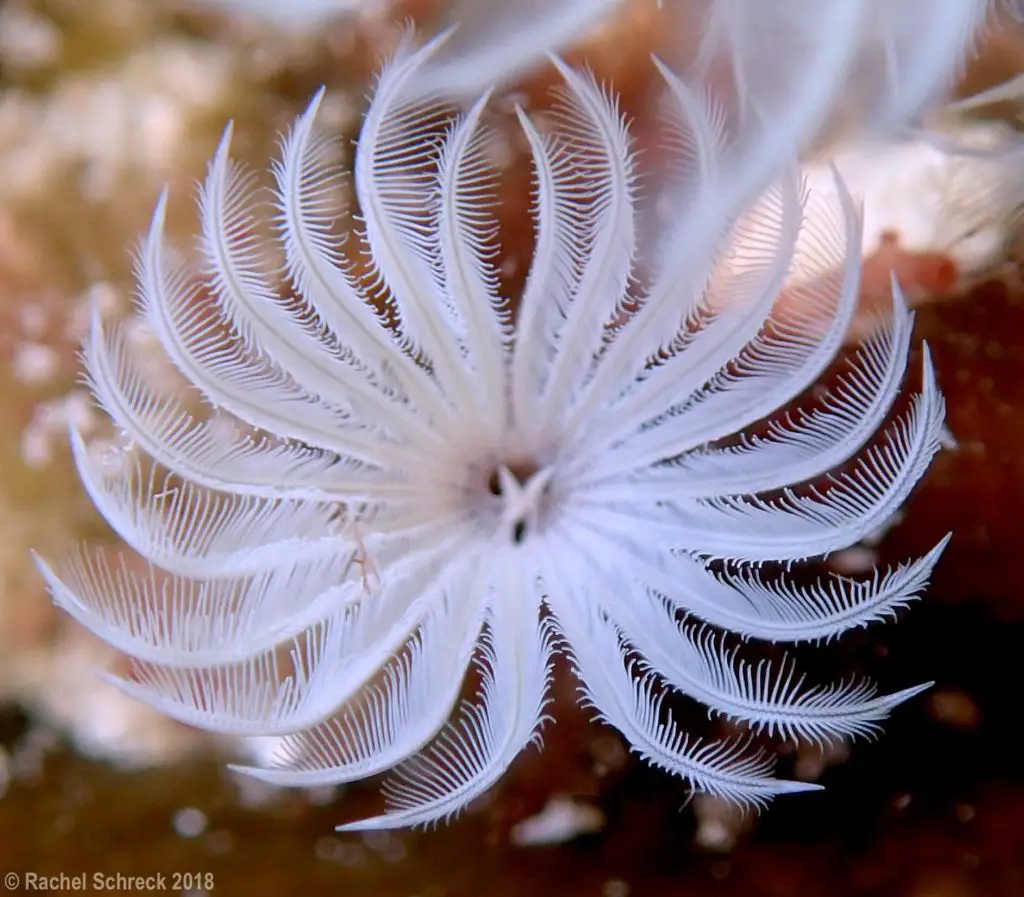
Social Featherduster Worms in Caribbean Region
Sometimes, these feather duster worms grow in clusters. These are known as social feather dusters.

Segmented Bristle Worms
Bearded Fireworms Can Sting if Touched
I’m sure I’ve gotten better at finding these worms, but I swear in the last few years it seems these bristly marine worms have grown in numbers and in size.
Some bearded fireworks (hermodice carunculata) are hefty critters that grow to about 10″/Xcm long and close to an inch wide.
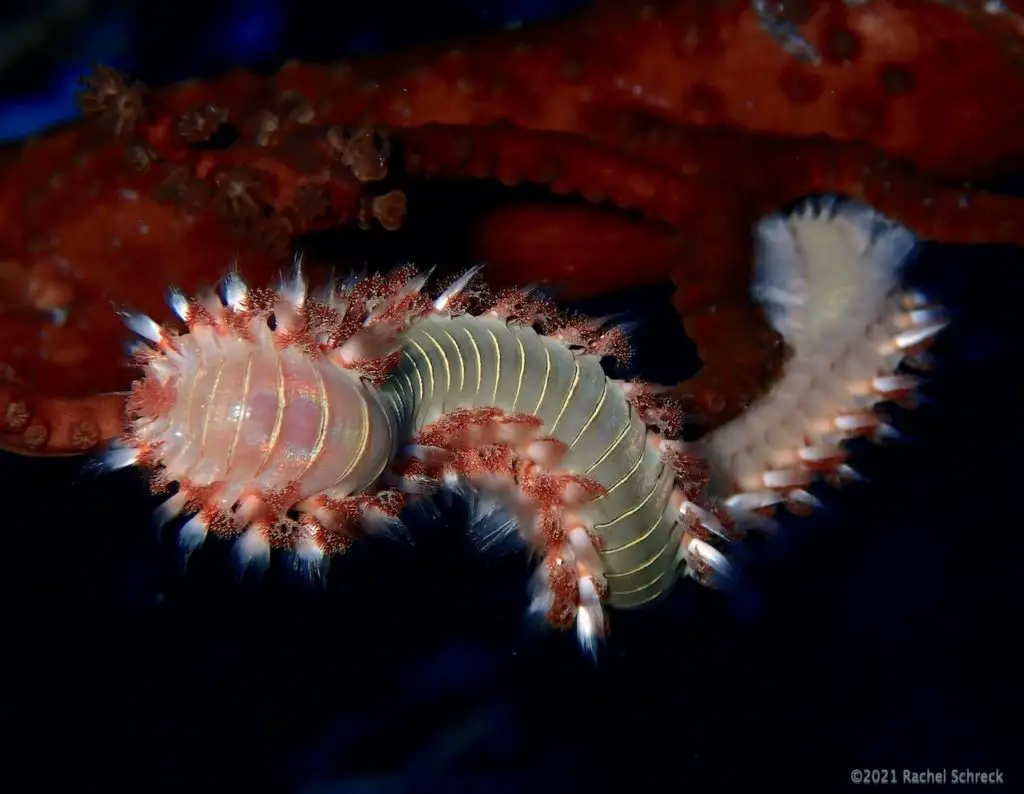
Often found intertwined with the branches of gorgonian corals, their common food source.
Bearded fireworms use a mouth opening on their underside to strip off the tips of the soft corals.

Meanwhile, divers in Cozumel can also frequently catch a glimpse of small juvenile bristle worms.
These are apparently vulnerable to predators at the small end of the food chain, such as the ubiquitous arrow crab, as you can see in the image here. (Note the small worm in the arrow crab’s tiny little iridescent blue claws, about to be consumed.)
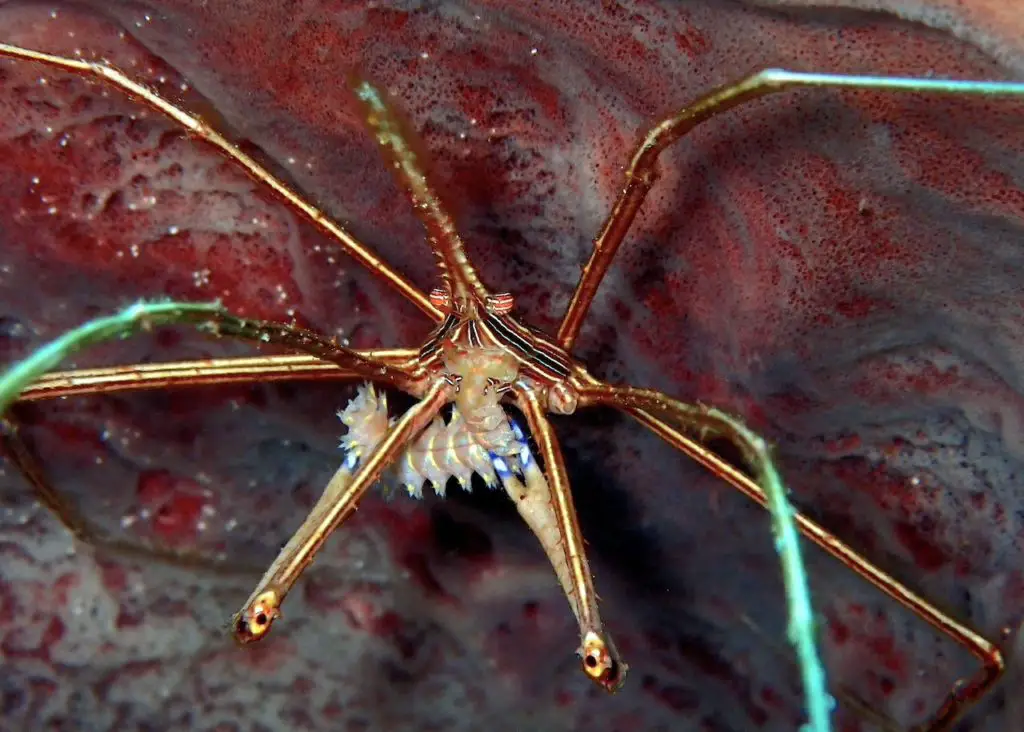
Like others in this classification, bearded fireworms have segmented bodies, and each segment has a tuft of small but rigid bristles used for protection.
The bristles can cause a fiery sting and can stay lodged in your skin if you touch or brush up against one of these worms, accidentally.
As with all marine life, do not touch.
Black-line Fireworms Are More Rare to See in Cozumel
Closely related to the bearded fireworm but far rarer to spot in Cozumel is the black-line fireworm (chloeia viridis).

According to that same book, these bristly worms also cause a painful sting.
So far, I’ve only seen two in all my dives here, and both were on the sandy ocean bottom.
Eventually, each one went into hiding by burrowing straight down into the sand. Gone.
Other Weirdo Underwater Worms in Cozumel
Speaking of marine worms that dwell in or under the sand, there are lots of other oddballs that aren’t as common to see while scuba diving, but they do occasionally emerge.
Keep your eyes on the sandy bottom when transitioning between reef sections, and you’re likely to spot at least portions of their bodies peeking out from the sand from time to time.
Peanut worm
This creepy little guy is called a peanut worm, to the best of my knowledge.

Infamous Vacuum Cleaner Hose Worm
And last but not least!
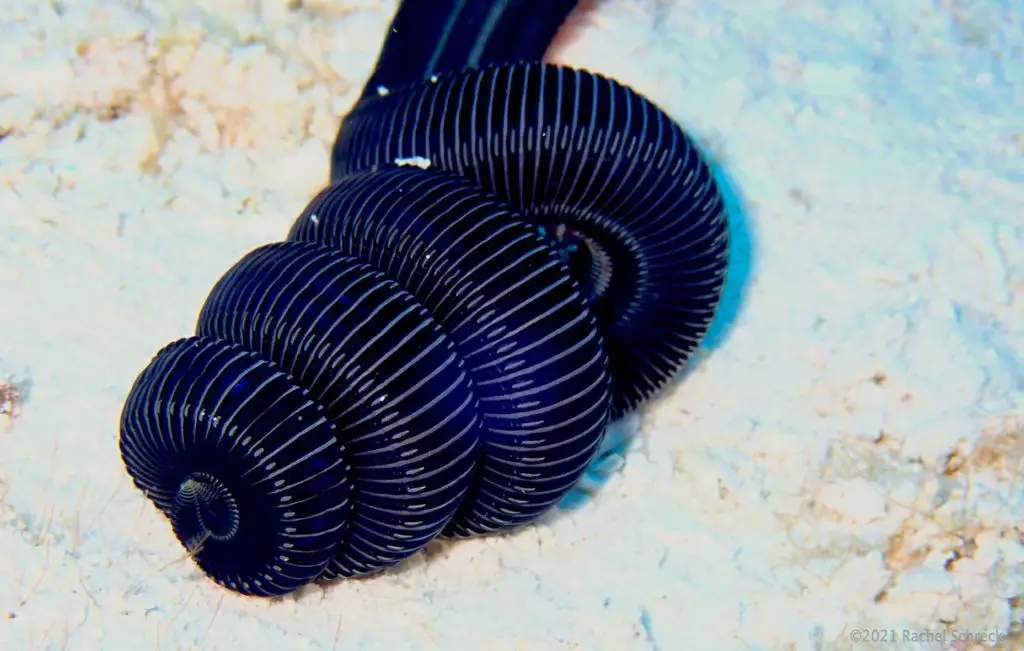
Just kidding on the name. But doesn’t it look like a hose to a vacuum or a car engine or something?
So far, I’ve seen this one just once, and was impressed with its size – the worm in that image above is approximately 1″ (25mm) in diameter. If anyone knows the real name, please drop me a line via the Contact page!
If you’re lucky, you’ll see all of these, and some others, including spaghetti worms, palp worms, and fan and feather dusters of all sizes, colors, and markings.
New to Cozumel diving? You may want to start with our full guide to fantastic diving here, year-round.
And if you’re not sure where to stay, or where to even begin, check out this post on Cozumel’s main hotel zones, and this one on some of our favorite iconic Cozumel dive hotels.
- Easy to use
- Easy to pack
- Easy on the wallet
- Durable, waterproof, dustproof
Learn those critters!
